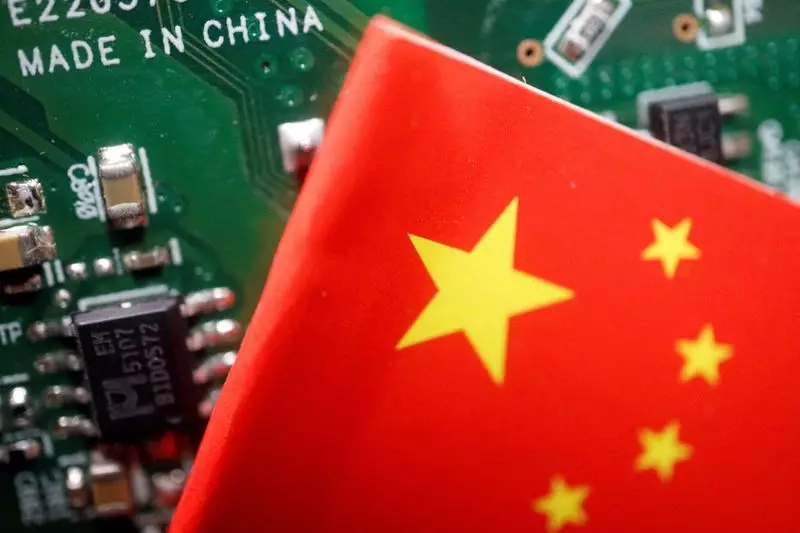The ongoing trade tensions between the United States and China have taken a significant toll on the Chinese semiconductor industry. Recently imposed export controls by the U.S. government have targeted key components of the sector, specifically focusing on chip-making equipment, software, and high-bandwidth memory. While these restrictions aim to curb China’s technological advancements—especially related to artificial intelligence military applications—Chinese companies are attempting to grapple with the repercussions and adapt to this precarious environment.
Following the announcement of the latest U.S. curbs, a variety of Chinese chip manufacturers expressed their commitment to accelerate the localization of their supply chains. Firms like Empyrean, which specializes in electronic design automation tools, asserted that the restrictions were not expected to impact their operations drastically. They indicated a proactive approach, aiming to expedite the development of domestic alternatives for their EDA tools. This sentiment was echoed by Jiangsu Nata Opto-Electronic Material, which manufactures materials essential for chip fabrication and plans to transition towards using more local substitutes—though their plans were not elaborated upon in detail.
Furthermore, companies like Beijing Huafeng Test & Control Technology reported that they had fully localized their supply chains long before the latest restrictions. This situation indicates a level of preparedness among some firms, suggesting that the long-standing tension has prompted gradual adjustments in operations, allowing these businesses to mitigate immediate adverse effects.
Despite some firms exhibiting resilience, experts opine that the U.S. curbs target a critical vulnerability in the Chinese semiconductor landscape—its dependence on foreign technology and equipment. Martijn Rasser from Datenna pointed out that the sector relies heavily on imports for sophisticated manufacturing tools. Jefferies analysts project a considerable financial impact, estimating that capital expenditures in the Chinese chip industry may plummet by approximately 30%, translating to a $10 billion reduction annually, leading to a total expenditure of around $35 billion.
Interestingly, data from China Customs revealed a surge in semiconductor equipment imports in recent months, with a substantial 33% increase leading up to the third quarter of 2023. This statistic reflects a somewhat paradoxical situation where, despite escalating tensions, Chinese firms have been ramping up their foreign purchases in anticipation of future needs. This trend raises questions about whether the current export controls might not yield the intended deceleration of China’s semiconductor advancements.
Analysts maintain that the recent curbs may not significantly impede the progress of Chinese semiconductor firms. Jeff Koch from SemiAnalysis emphasized that while the constraints have made it challenging for manufacturers at the cutting edge, they do not represent a game-changing disruption. His commentary suggests that the sector was already adapting to the existing limitations, making it unlikely for the new measures to achieve a dramatic shift in operational dynamics.
The exclusion of ChangXin Memory Technologies (CXMT) from the U.S. entity list stunned some observers and provided immediate relief to South Korean equipment suppliers that depend on this Chinese manufacturer. Analysts view this exclusion as a tactical decision by the Biden administration, balancing the desire to restrict advanced Chinese technologies with the need to maintain economic stability within allied sectors. Short-term benefits for companies such as Jusung Engineering illustrate the nuanced ramifications of these policies on supply chains beyond China.
The complexities surrounding U.S.-China relations, particularly within the semiconductor industry, highlight both the challenges and adaptive capabilities of Chinese firms. While the U.S. seeks to exert economic pressure through export controls—aiming to stifle technological advancement potentially utilized for military purposes—Chinese companies are showing a remarkable degree of resilience and foresight in their responses. The evolving dynamics in international trade reflect an ongoing tug-of-war, where adaptability in supply chains will remain critical to navigating uncertainties ahead. For the foreseeable future, it is evident that the semiconductor arena will continue to be a focal point of geopolitical tensions, necessitating constant vigilance and strategic foresight from affected stakeholders.

